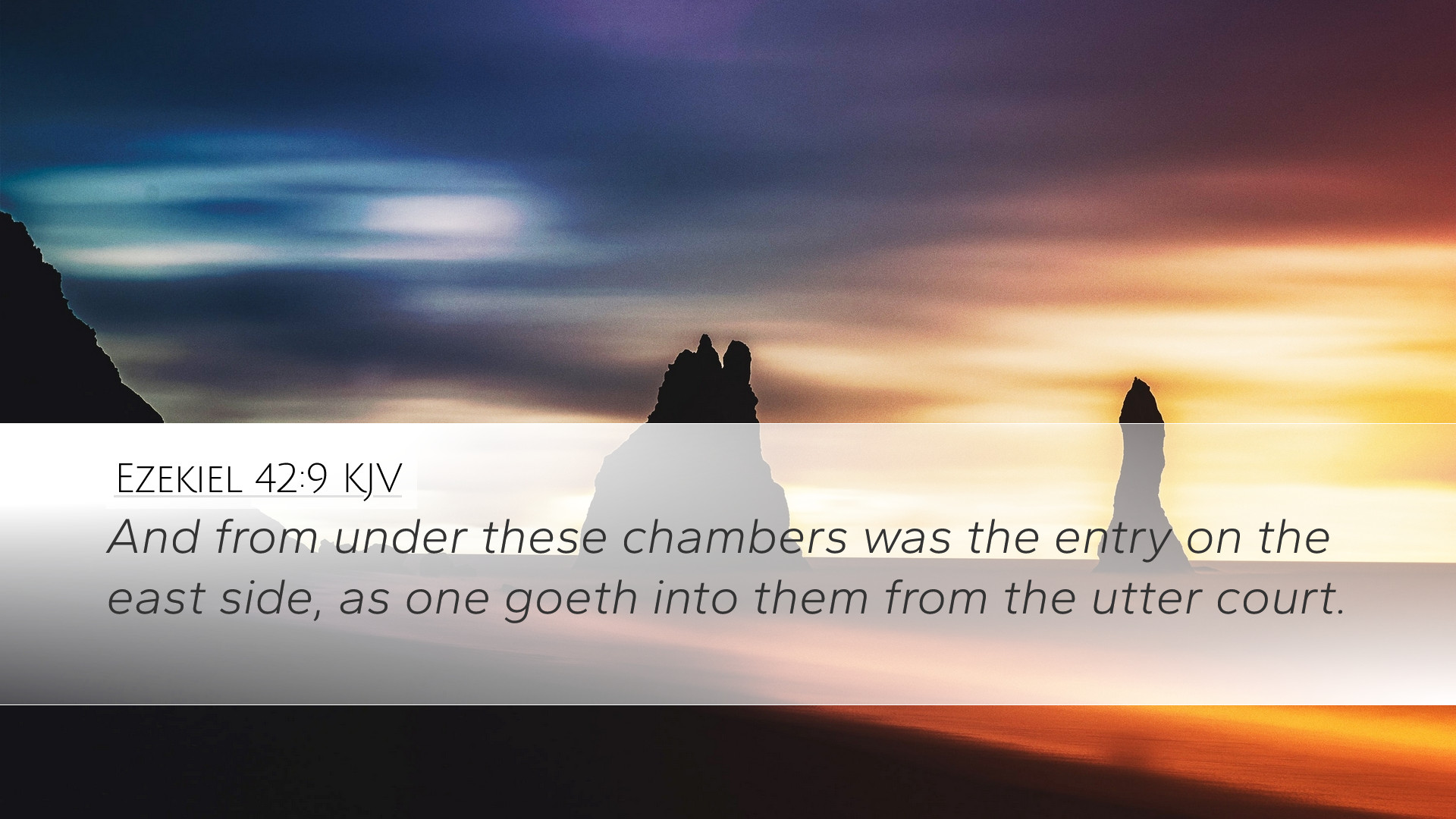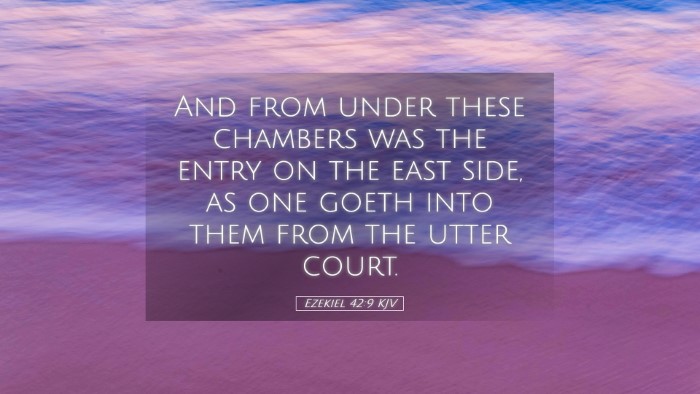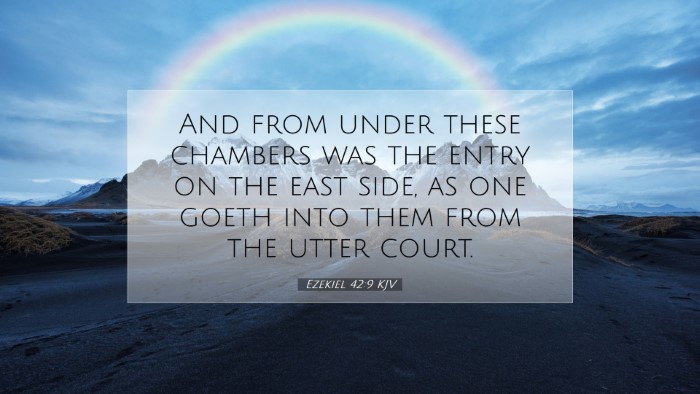Bible Commentary on Ezekiel 42:9
Ezekiel 42:9 states: "Below these chambers was the entry on the east side, as one goeth into them from the outer court." This verse belongs to a section in Ezekiel that describes the temple and its various compartments in detail. Understanding this verse requires analyzing its context within the overarching vision of the temple conveyed throughout the book.
Contextual Overview
The Book of Ezekiel documents the prophet's experiences during the Babylonian exile, where he communicates God's revelations to Israel. The vision of the temple serves multiple purposes: reinstating God's presence among His people, providing a blueprint for worship, and assuring them of future restoration. Ezekiel 42 contains a meticulous description of the temple's structure, highlighting its chambers and areas for the priests and God's worship.
Structural Insights
Ezekiel 42:9 is pivotal as it connects the preceding and subsequent descriptions of the temple's compartments. Matthew Henry comments that the chambers symbolize a place where the priests would serve and commune with God. This verse emphasizes the access points to these chambers, highlighting the organized nature of worship facilitated by God’s design.
Symbolic Significance
Albert Barnes notes that the "entry on the east side" indicates an intentional design intrinsic to the worshippers' experience. The east has biblical significance; it’s often associated with divine presence and new beginnings. Thus, the entryway set in the east suggests God's approachability and the invitation extended to His people for communion.
Intercessory Role of the Priests
The chambers referenced in this verse primarily serve the priests. Adam Clarke stresses that these chambers were primarily for the priests to use in close proximity to the temple, thus maintaining a sacred space for their duties. The priests represent the people before God, and their handling of the sacred offerings illustrates an essential intercessory role in Israel's relationship with the Lord.
Historical Context
During Ezekiel's time, the Israelites were in exile and had lost their original place of worship, the temple in Jerusalem. This vision of the temple not only provides hope for restoration but also gives practical guidance on organizing their future worship. The meticulous detail present in Ezekiel’s vision echoes the earlier instructions given to Moses regarding the tabernacle, reinforcing continuity in God's design for worship.
Application for Today
In considering Ezekiel 42:9, contemporary readers are reminded of the importance of structured worship. In a time when church organization can become lax, this verse serves as a reminder that God values order and intentionality in worship communities. For pastors and church leaders, the emphasis on designated spaces for worship and ministry reflects the need for environments conducive to spiritual growth and worship.
Lessons for Church Leadership
- Order and Purpose: Just as the temple had specific areas for different purposes, church organizations today should define roles and spaces conducive to their mission.
- Accessibility: The east entry symbolizes God's readiness to be approached. Leaders are encouraged to cultivate accessible environments for congregational engagement.
- Intercessory Leadership: The role of priests as intercessors can be translated into the modern pastoral role of guiding and supporting the community spiritually.
Theological Implications
The verse emphasizes God's desire to dwell among His people, which is a recurring theme throughout Scripture. With the physical temple eventually replaced by the living temple—the body of Christ—this passage invokes a deeper understanding of how God interacts with humanity. The idea of access points to God's presence contrasts with the barriers that sin has caused, while the new covenant in Christ offers believers unparalleled access to God.
Encouragement for Believers
For believers today, Ezekiel 42:9 may serve as a reminder of not only the structure of worship but also the significance of community in drawing near to God. It encourages active participation in church life and honors the sacred altar of worship. The importance of designating times and spaces for God’s presence can guide congregations in structuring their lives around worship and communion.
Conclusion
Ezekiel 42:9 is a verse deeply embedded in the holistic vision of restoration, order, and God's indwelling presence among His people. Through the insights of Matthew Henry, Albert Barnes, and Adam Clarke, a rich tapestry of meaning emerges that is both theologically profound and practically applicable for believers today. As congregations consider their own spaces of worship, they might reflect on how to honor God's design for community and access to His presence in their lives.


